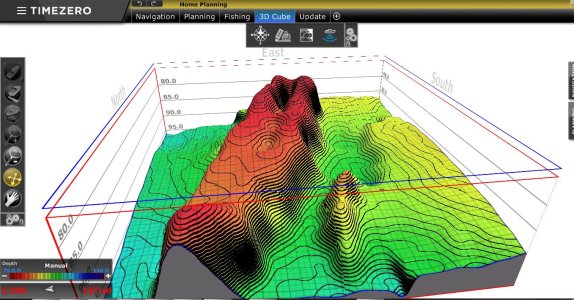Hi all,
We are rebuilding a 26 foot commercial line fishing vessel. We are stripping it to bare hull and fitting new deck, wheelhouse, engine and of course electronics.
A good deal of the year we fish on wrecks for white pollack, a member of the cod family, at a depth of 80 to 160 meters, the mean/most common depth we work at is 120 meters. We very rarely go beyond this depth but it can happen that we go beyond 200 meters. Another part of the year we fish in closer to shore, longlining for various species from 0 to 80 meters.
My last boat was fitted with a Furuno package,the main sounder was a DFF1UHD sounder with CM265LH transducer, running on Timezero Professional. What I loved about this package was the bottom discrimination (only worked well inshore up to maybe 80 meters), and its ability to mark accufish on the map which is extremely usefull. The memory which allowes to scroll back on the sounder screen and the ability to click directly on the sounder image to create marks on the map was also very usefull.
What i didn't like about it was that I always found the quality of the image poor compared to other sounders (worked on a boat with a FCV1150 which had a much clearer image). It was also unable to do PBG on some wrecks, as if the echo was going trough the wreck (will try to attach images).
I was initially thinking of installing a WASSP F3 but the local electronics firm and furuno rep are worried that it will not work very well on my small boat and it is extremely expensive in continential Europe.
After a lot of thinking (and reading this forum ! ) I have been thinking of installing the following package:
-DFF3D for scanning a wider zone when searching for wrecks and aquiring PBG data at a much quicker rate.
-DFF1UHD for marking accufish on map and generating bottom discrimination maps.
-165T/265LH-PM488 DFF3D/CHIRP Combination transducer for pre mentioned sounders.
-FCV1150 with a 2 to 3 kW transducer for the clear easy to read image and its ability to go deeper than the dff1uhd.
Any recommendations on transducers for the F1150 ? Would like to have a high and a low frequency, I have heard that 38 kHz is superior to 50 kHz for marking Saithe/black pollock which is a close cousin of my main taget species. I would like the high frequency to have a narrow beam for manually drawing underwater reefs and wrecks more precisely. I understand I must install two transducers to have high and low frequency over 1 kW.
Does the package seem coherent ?
Thank you for your replies !
We are rebuilding a 26 foot commercial line fishing vessel. We are stripping it to bare hull and fitting new deck, wheelhouse, engine and of course electronics.
A good deal of the year we fish on wrecks for white pollack, a member of the cod family, at a depth of 80 to 160 meters, the mean/most common depth we work at is 120 meters. We very rarely go beyond this depth but it can happen that we go beyond 200 meters. Another part of the year we fish in closer to shore, longlining for various species from 0 to 80 meters.
My last boat was fitted with a Furuno package,the main sounder was a DFF1UHD sounder with CM265LH transducer, running on Timezero Professional. What I loved about this package was the bottom discrimination (only worked well inshore up to maybe 80 meters), and its ability to mark accufish on the map which is extremely usefull. The memory which allowes to scroll back on the sounder screen and the ability to click directly on the sounder image to create marks on the map was also very usefull.
What i didn't like about it was that I always found the quality of the image poor compared to other sounders (worked on a boat with a FCV1150 which had a much clearer image). It was also unable to do PBG on some wrecks, as if the echo was going trough the wreck (will try to attach images).
I was initially thinking of installing a WASSP F3 but the local electronics firm and furuno rep are worried that it will not work very well on my small boat and it is extremely expensive in continential Europe.
After a lot of thinking (and reading this forum ! ) I have been thinking of installing the following package:
-DFF3D for scanning a wider zone when searching for wrecks and aquiring PBG data at a much quicker rate.
-DFF1UHD for marking accufish on map and generating bottom discrimination maps.
-165T/265LH-PM488 DFF3D/CHIRP Combination transducer for pre mentioned sounders.
-FCV1150 with a 2 to 3 kW transducer for the clear easy to read image and its ability to go deeper than the dff1uhd.
Any recommendations on transducers for the F1150 ? Would like to have a high and a low frequency, I have heard that 38 kHz is superior to 50 kHz for marking Saithe/black pollock which is a close cousin of my main taget species. I would like the high frequency to have a narrow beam for manually drawing underwater reefs and wrecks more precisely. I understand I must install two transducers to have high and low frequency over 1 kW.
Does the package seem coherent ?
Thank you for your replies !




